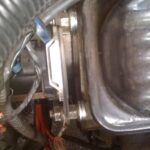In the quest for enhanced fuel efficiency and a smoother driving experience, the Continuously Variable Transmission (CVT) has emerged as a compelling alternative to traditional automatic transmissions. CVTs offer a unique approach to power delivery, eliminating the fixed gears found in conventional transmissions and replacing them with a system that provides an infinite range of gear ratios. This article delves into the workings of CVTs, exploring their benefits, and highlighting why they are becoming increasingly popular in modern vehicles.
How Does a Continuously Variable Transmission Work?
To grasp the concept of a CVT, it’s helpful to contrast it with a familiar system: the bicycle. Imagine a traditional bicycle with multiple gears. Each gear provides a distinct ratio, optimized for different situations – lower gears for uphill climbs and higher gears for faster speeds on flat terrain. A conventional automatic transmission in a car operates on a similar principle, using a set of fixed gears to adjust the engine’s output to the wheels.
Comparison of traditional bicycle gears illustrating fixed gear ratios.
However, unlike these stepped gear systems, a continuously variable transmission, or CVT, offers a seamless and uninterrupted flow of power. Instead of gears, a CVT utilizes two pulleys connected by a belt or chain. These pulleys are not fixed in size; they are designed to vary in width. By adjusting the width of these pulleys, the CVT can create an infinite spectrum of gear ratios.
Subaru’s Continuously Variable Transmission (CVT) showcases a steel chain connecting variable width pulleys, eliminating fixed gears for seamless power delivery.
Imagine squeezing a garden hose – you can continuously adjust the water flow, rather than having only a few pre-set levels. A CVT operates similarly with engine power. When you accelerate in a CVT-equipped vehicle, you won’t feel the distinct shifts associated with traditional automatic transmissions. Instead, the engine speed adjusts smoothly, always maintaining the optimal RPM for either power or fuel efficiency, depending on driving demands.
The Advantages of Continuously Variable Transmissions
CVTs offer a range of benefits that contribute to a more refined and efficient driving experience:
Enhanced Fuel Economy
One of the primary advantages of CVTs is their ability to improve fuel economy. Engines are most efficient within a specific RPM range. A CVT can keep the engine operating within this optimal range for a longer duration compared to traditional transmissions, which must cycle through fixed gear ratios. By constantly adjusting the ratio to match driving conditions, the engine avoids unnecessary revving, leading to significant fuel savings. For example, Subaru’s Lineartronic CVT has been credited with substantial MPG improvements in models like the Forester.
Smoother Driving Experience
The absence of fixed gears in a CVT results in an exceptionally smooth and seamless driving experience. Gear changes in traditional automatics, even refined ones, can sometimes be felt as slight jolts or interruptions in power delivery. CVTs eliminate these interruptions entirely. Acceleration is linear and fluid, contributing to a more comfortable and refined ride, especially in stop-and-go traffic. Subaru aptly names their CVT “Lineartronic,” highlighting this linear power delivery.
Optimized Engine Performance
Engines produce peak power and torque at specific RPMs. A CVT intelligently manages the engine speed to consistently operate within this “sweet spot.” Whether you need maximum acceleration or are cruising for fuel efficiency, the CVT ensures the engine is always working at its most effective point. This translates to responsive performance when you need it and relaxed, efficient cruising when you don’t.
Lighter and More Compact Design
Generally, CVTs are often lighter and more compact than traditional automatic transmissions with comparable capabilities. This reduced weight contributes to improved overall vehicle efficiency, benefiting fuel economy and handling. The simpler design with fewer moving parts can also potentially lead to increased reliability and reduced maintenance over the long term.
Responsive Acceleration
Because a CVT can maintain continuous power delivery without the interruptions of gear shifts, it can offer quicker and more responsive acceleration in certain situations. Traditional transmissions experience brief power breaks during gear changes. CVTs avoid this, ensuring uninterrupted power flow to the wheels.
Subaru Lineartronic CVT: A Refined Example
Subaru’s Lineartronic CVT is a prime example of how this technology can be implemented to enhance the driving experience. Designed to complement Subaru’s BOXER engine and Symmetrical All-Wheel Drive, Lineartronic focuses on delivering seamless response and maximizing efficiency. Features like adaptive control, which adjusts shifting based on driving style and road conditions, and stepped variable control, which responds to engine speed changes, further refine the CVT’s performance.
Cutaway of a Lineartronic CVT revealing the pulley system that enables continuous gear ratio changes for optimal performance and efficiency.
For drivers who desire a more engaging experience, some CVTs, including Subaru’s Lineartronic in certain models, offer a manual mode with paddle shifters. These paddle shifters allow drivers to simulate gear changes through pre-programmed set points within the CVT’s continuous range, providing a sporty feel when desired.
Paddle shifters located behind the steering wheel, enabling manual gear selection in vehicles equipped with Continuously Variable Transmission (CVT).
Conclusion: The Rise of CVT
Continuously variable transmissions represent a significant advancement in automotive technology, offering a compelling combination of fuel efficiency, smooth operation, and optimized performance. As manufacturers continue to prioritize these attributes, CVTs are poised to play an increasingly prominent role in the future of automotive powertrains, providing drivers with a refined and efficient driving experience.

